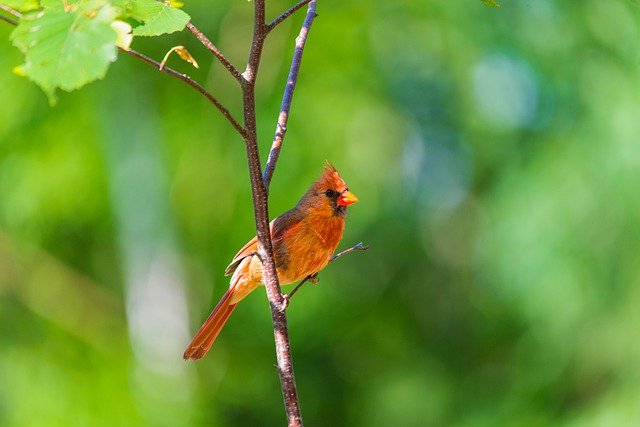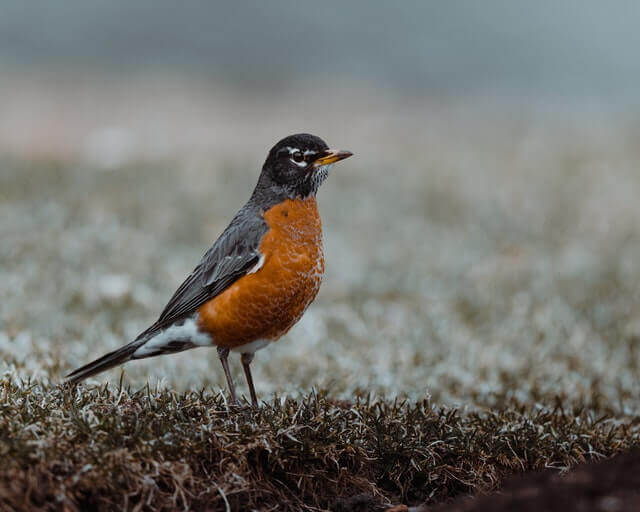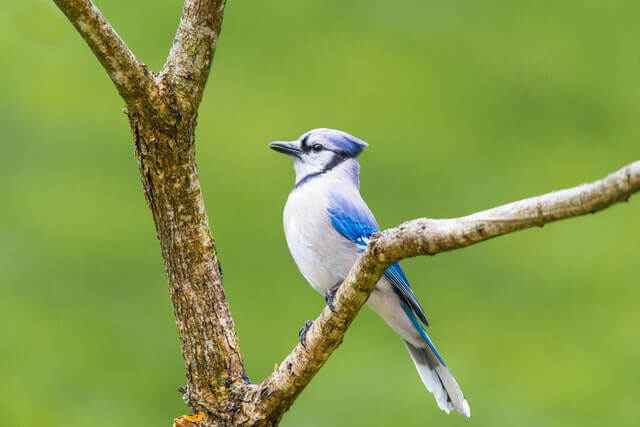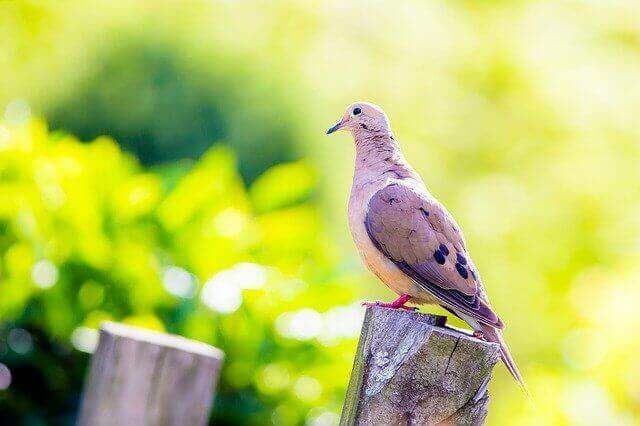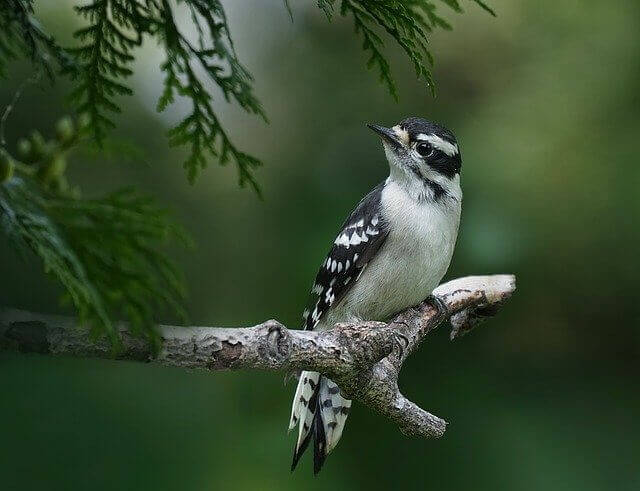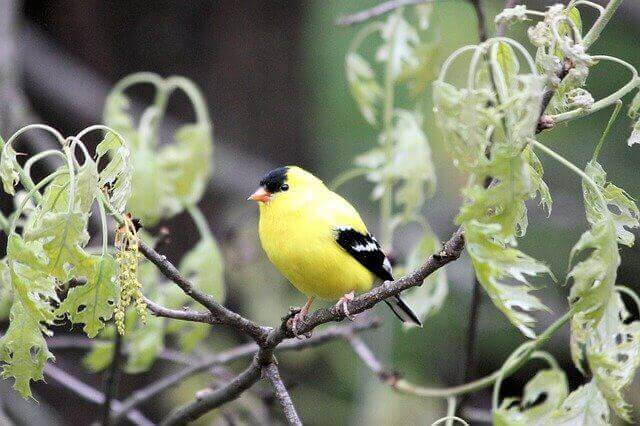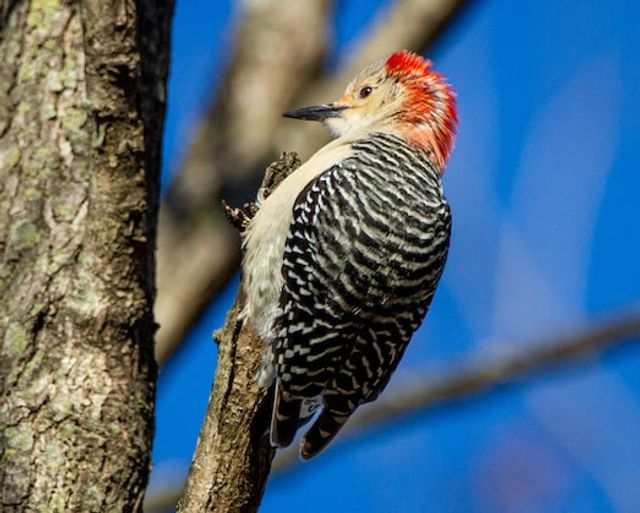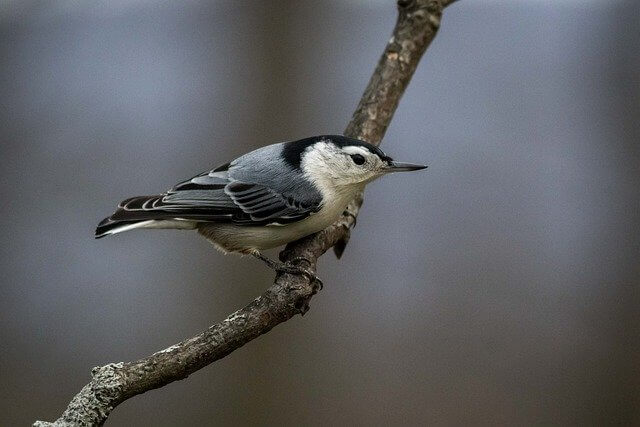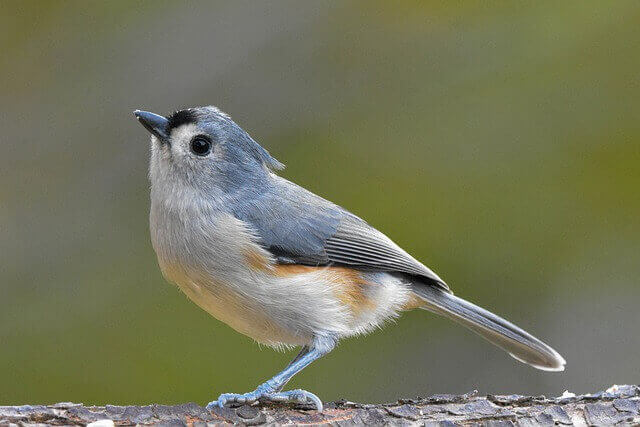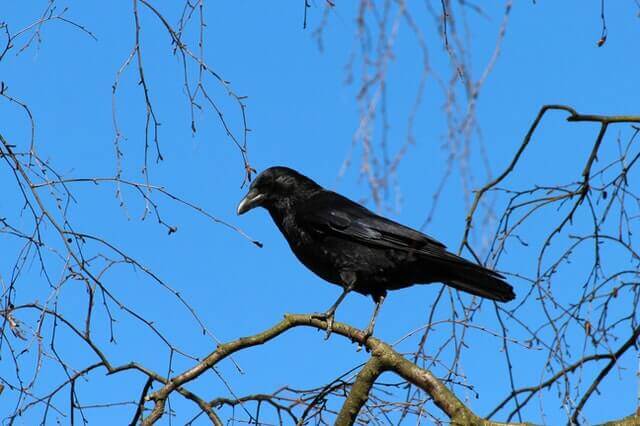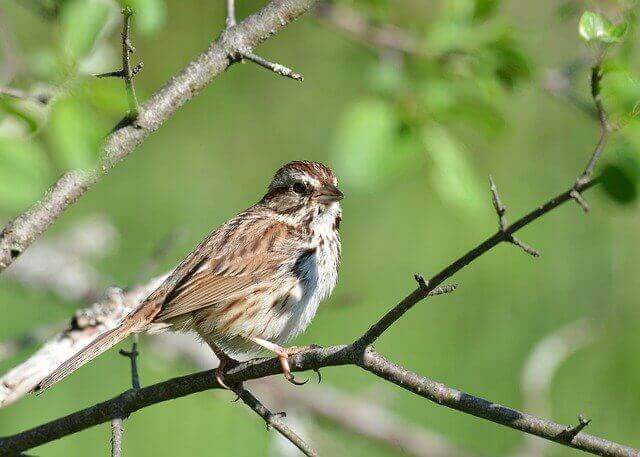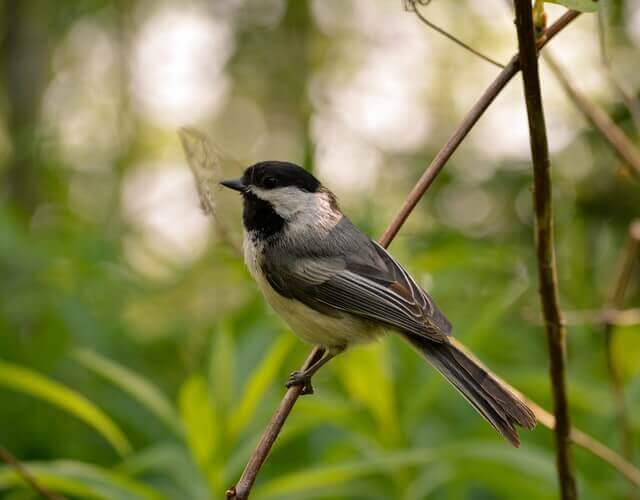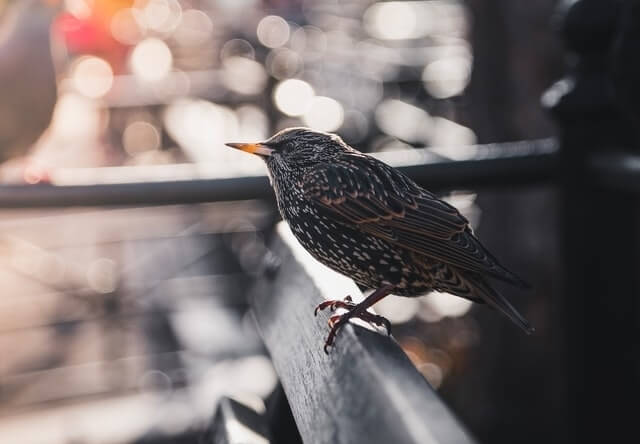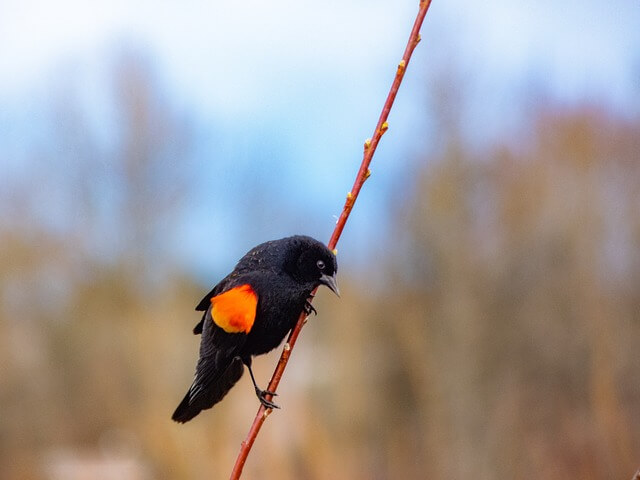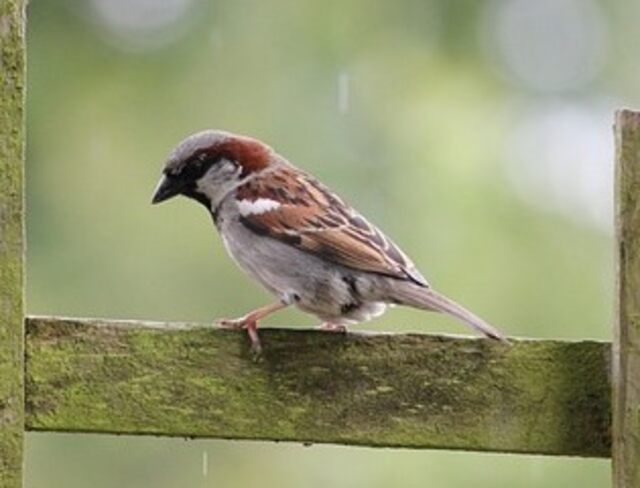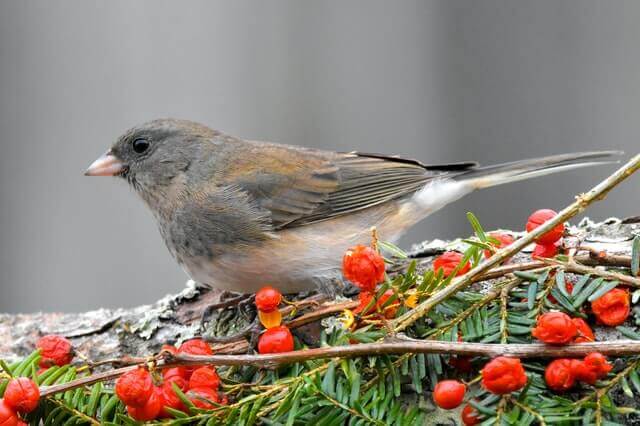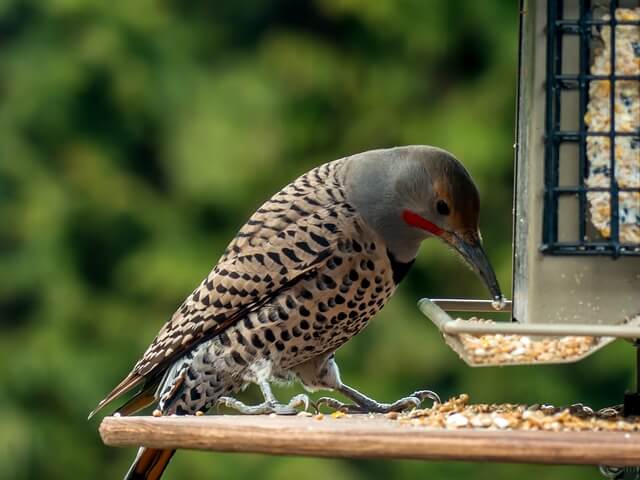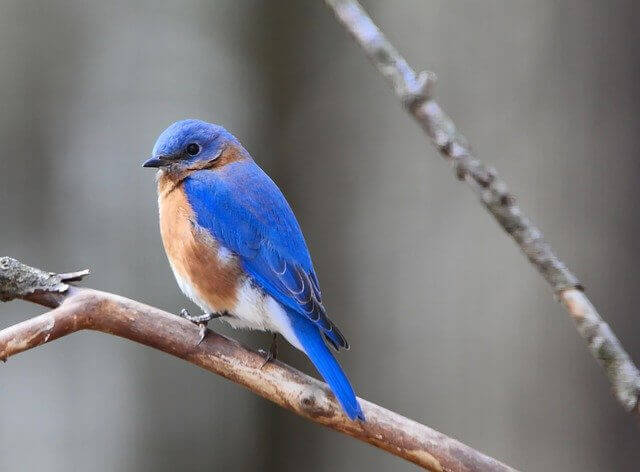Welcome to the captivating world of Indiana’s birdlife! Nestled between the Great Lakes and the Ohio River, Indiana boasts a rich variety of avian species that enchant both birdwatchers and nature enthusiasts alike. In this comprehensive guide, we’ll take you on a journey through the diverse habitats of the Hoosier State, introducing you to the 63 most common birds you’re likely to encounter.
From vibrant songbirds to majestic raptors, each species has its own unique charm and story. So, grab your binoculars and join us as we explore the fascinating avian wonders of Indiana! Don’t forget to get your FREE birdwatching checklist for Indiana to enhance your birdwatching experience!
Table of Contents
- 1 Most Common Birds in Indiana
- 1.1 Northern Cardinal
- 1.2 American Robin
- 1.3 Blue Jay
- 1.4 Mourning Dove
- 1.5 Downy Woodpecker
- 1.6 American Goldfinch
- 1.7 Red-bellied Woodpecker
- 1.8 White-breasted Nuthatch
- 1.9 Tufted Titmouse
- 1.10 American Crow
- 1.11 Song Sparrow
- 1.12 Carolina Chickadee
- 1.13 European Starling
- 1.14 Red-winged Blackbird
- 1.15 House Sparrow
- 1.16 House Finch
- 1.17 Carolina Wren
- 1.18 Dark-eyed Junco
- 1.19 Northern Flicker
- 1.20 Eastern Bluebird
- 2 Frequently Asked Questions
- 2.1 What is the most common bird in Indiana?
- 2.2 What is the rarest bird in Indiana?
- 2.3 What are the largest birds in Indiana?
- 2.4 Do we have ravens in Indiana?
- 2.5 Are there osprey in Indiana?
- 2.6 Are there golden eagles in Indiana?
- 2.7 Are peregrine falcons in Indiana?
- 2.8 Do falcons live in Indiana?
- 2.9 Are there vultures in Indiana?
- 2.10 Are there herons in Indiana?
- 2.11 Does Indiana have egrets?
- 2.12 Are there cranes in Indiana?
- 2.13 Are there storks in Indiana?
- 2.14 Do sandhill cranes stay in Indiana for the winter?
- 2.15 Are there whooping cranes in Indiana?
- 2.16 Are scarlet tanagers in Indiana?
- 2.17 Are loons in Indiana?
- 3 Author
Most Common Birds in Indiana
Northern Cardinal
The Northern Cardinal is a very common bird in the genus Cardinalis, it is also commonly called the redbird or common cardinal. It is common in North America, eastern United States through southern Canada, all through the eastern United States up through Mexico, Guatemala, and northern Mexico. This is amazing species with a wide variety of foods, it likes including sunflower seeds, nectar, worms, berries, and even other insects.
They also eat grasshoppers, crickets, moths, butterflies, aphids, snails, and flies. In winter they are particularly fond of berries and black walnut shells, which they eat on a daily basis. With their unique features and interesting habits, you should definitely consider taking up bird feeding in your yard.
- Frequency: 59.69% (Statistic: eBird)
- Color: Mostly red with a black mask on the face, short pink bill
- Habitat: woodlands, gardens, parks, backyards, and wetlands
- Range: USA, Canada, Mexico
- Size: 8.2 – 9.3″ inches
- Weight: 33 – 65 grams
- Diet: Fruits, berries, and insects (grasshoppers, beetles, snails, cicadas)
- Family: Cardinalidae
- Genus: Cardinalis
- Maps: Range Map – Sightings Map
- Sounds: Calls and Songs
Related:
- 10 Best Bird Feeders for Cardinals (Rated for 2022)
- Where are Cardinal Birds Found – Best Places to Look
- Cardinal Bird Facts You Never Knew
American Robin
The American Robin is a migratory bird that can be found in woodlands, gardens, and parks across North America. The Robin is most commonly found in the eastern United States and southern Canada, but can also be spotted as far west as Alaska and as far south as Mexico. The American Robin is a seed-eater and will also feed on insects, fruits, and berries.
Robins typically eat four to eight times a day and will drink water frequently to stay hydrated. You can often find them bathing in puddles or small pools of water. The American Robin nesting season begins in April and can last until July. Females will build a nest out of grass, twigs, mud, and other materials they can find near their chosen nesting site.
- Frequency: 45.05%
- Color: Mostly brown on the back with an orange colored breast
- Habitat: Wooded areas, backyards, parks, fields
- Range: USA, Canada, Mexico
- Size: 12 – 16″ inches
- Weight: 72 – 95 grams
- Diet: Fruits, berries and insects (earthworms, beetles, caterpillars)
- Family: Turdidae
- Genus: Turdus
- Maps: Range Map – Sightings Map
- Sounds: Calls and Songs
Related:
- Interesting American Robin Fun Facts
- How To Attract Robins To Your Yard – 7 Best Tips!
- 5 Best Bird Feeders For Robins (Tested & Rated For 2022)
Blue Jay
The Blue Jay is a member of the Corvidae family, native to North America. It is resident through most of the eastern and central United States and southern Canada, although western populations may be migratory. The Blue Jay’s range extends from Newfoundland to Manitoba in Canada, south to Florida and Mexico. The diet of the Blue Jay consists mainly of acorns, insects, fruits, and nuts.
In winter, when these food sources are scarce, they will eat other birds’ eggs and nestlings. The Blue Jay typically inhabits woodlands, but can also be found in urban areas. They are adaptable birds, and will often build their nests in trees or on buildings.
- Frequency: 44.72%
- Color: Blue crest on the head, wings, back, and tail, and has a white face and belly
- Habitat: Deciduous and mixed forests, mixed woodlands, backyards, parks
- Range: Southern Canada, Eastern and Central United States, Florida and Texas
- Size: 8 – 12″ inches
- Weight: 70 – 100 grams
- Diet: Nuts, seeds, caterpillars, grasshoppers, and beetles
- Family: Corvidae
- Genus: Cyanocitta
- Maps: Range Map – Sightings Map
- Sounds: Calls and Songs
Related:
- How to Attract Blue Jays to your Yard?
- Do Blue Jays Migrate? The Truth
- What do Blue Jay Eat – All The Facts
Mourning Dove
Mourning doves are found in North and Central America. Their range extends from southern Canada to northern Mexico. The mourning dove is a migratory bird, meaning that it will travel long distances to find a suitable place to live. The mourning dove prefers open areas such as fields or prairies. It also likes to build its nest in trees or bushes.
The diet of the mourning dove consists mainly of seeds, but it will also eat insects and fruits. The mourning dove is a popular bird for hunting. In some parts of the United States, the hunting season for mourning doves begins in September and lasts through November.
- Frequency: 42.70%
- Color: Light gray-brown and lighter and pinkish below. The wings have black spots.
- Habitat: Open habitats, urban areas, farms, prairie, grassland, wooded area
- Range: USA, Canada, Mexico, Central America, Greater Antilles
- Size: 12″ inches length
- Weight: 112 – 170 grams
- Diet: Rapeseed, corn, millet, safflower, sunflower seeds, pokeberry, sesame, and wheat.
- Family: Columbidae
- Genus: Zenaida
- Maps: Range Map – Sightings Map
- Sounds: Calls and Songs
Related: Facts About Mourning Doves – 10 Things You Need To Know!
Downy Woodpecker
The Downy Woodpecker (Picoides pubescens) is a small woodpecker found in North America. The adult Downy Woodpecker is 5.5-7.0 inches long with a black and white body. The back is black with large white spots, while the underparts are mostly white with some black spots. The wings are black with two white bars, and the tail is black with two white bands. The male has a red patch on the back of the head, while the female has a smaller red patch or no red at all.
The Downy Woodpecker ranges from Alaska and Canada to Central America. In the United States, it is found in all states east of the Rocky Mountains except for Florida. The Downy Woodpecker prefers woodlands, but can also be found in parks and suburban areas. The downy woodpecker feeds on insects, spiders, and other small animals.
- Frequency: 42.40%
- Color: Black with a white throat, belly, and back. White spots on wings
- Habitat: Deciduous forests and thickets, roadside, grasslands, backyards, parks
- Range: Canada, USA, and Mexico
- Size: 5.5 – 7.1″ inches in length
- Weight: 20 – 33 grams
- Diet: Mostly insects and beetles and ants, also gall wasps, caterpillars
- Family: Picadae
- Genus: Dryobates
- Maps: Range Map – Sightings Map
- Sounds: Calls and Songs
Related: How to Attract Downy Woodpeckers to Your Yard? (Easy!)
American Goldfinch
The American Goldfinch is a small songbird with a cheerful disposition. The male has a bright yellow body with black wings and tail, while the female is more subdued in coloration. These birds are found throughout North America, from Alaska to Newfoundland and south to Mexico. They prefer open habitats such as fields, meadows, and edges of woods.
The American goldfinch feeds primarily on seeds, especially those of thistle and sunflower. They will also eat insects during the breeding season when they are feeding their young. These birds are often seen at birdfeeders, where they can be quite tame.
- Frequency: 42.39%
- Color: Face, neck, and underside are yellow, black wings with white bars
- Habitat: Deciduous forests and thickets, roadside, grasslands, backyards, meadows
- Range: Canada, USA and Mexico
- Size: 4.3 – 5.5″ inches length
- Weight: 12 -18 grams
- Diet: Grass, dandelions, chickweed, sunflowers and ragweed, thistle, red alder, birch, spruce seeds
- Family: Carduelinae
- Genus: Spinus
- Maps: Range Map – Sightings Map
- Sounds: Calls and Songs
Related: American Goldfinch Interesting Facts
Red-bellied Woodpecker
The red-bellied woodpecker is a small woodpecker of the family Picidae, of which it is the most common species. It breeds primarily in the eastern U.S., mostly from the west coast, but also as far east as northern Canada and even as far north as northern Mexico.
In the spring and fall, the red-bellied woodpecker prefers coniferous trees in old-growth forests but will move into deciduous forests in search of insects, fruits and seeds. The bird’s beak is specially designed for piercing the hard outer cover of tree trunks, easily pulling out insects.
- Frequency: 39.34%
- Color: Gray on body and face and underparts. Black and white pattern on wings, back, and tail.
- Habitat: Forests, backyards
- Range: Southern Canada, Eastern United States, Florida
- Size: 9 – 10.6″ inches long
- Weight: 56 -91 grams
- Diet: Insects, tree frogs, eggs of small birds, oozing tree sap, and small fish.
- Family: Picidae
- Genus: Melanerpes
- Maps: Range Map – Sightings Map
- Sounds: Calls and Songs
Related: How to Attract Red-bellied Woodpeckers to your Yard?
White-breasted Nuthatch
The White-breasted Nuthatch is a small, sprightly bird with a black cap and a telltale white stripe over its eye. It’s common to see these birds darting about in pairs as they forage for insects on tree trunks and branches. The white-breasted nuthatch has a wide range, spanning much of North America, and can be found in both woodlands and suburban areas.
These adaptable birds prefer to nest in tree cavities, but will also use man-made nesting boxes. Their diet consists mostly of insects, but they will also eat spiders, nuts, and berries. In the winter months, when food is scarce, they often form small flocks and visit bird feeders.
- Frequency: 38.46%
- Color: Has a white face, flanks, and chest. It has a black cap on its head a bluish-gray upper and a brown belly
- Habitat: Deciduous forests, conifers, roadside, rivers, backyards, parks
- Range: Southern Canada, USA
- Size: 5.9″ inches
- Weight: 20 grams
- Diet: Acorn nuts, hickory nuts, ants, caterpillars, scale insects, pine weevils
- Family: Sittidae
- Genus: Sitta
- Maps: Range Map – Sightings Map
- Sounds: Calls and Songs
Related: How to Attract Nuthatches to your Backyard
Tufted Titmouse
The tufted titmouse is a small songbird that resides in the eastern United States. It is a common backyard bird that is attracted to bird feeders. The tufted titmouse is easily identified by its gray body and white breast, as well as its distinctive crest. The tufted titmouse prefers mature forests with dense canopy cover. It is often found in mixed woods that contain oaks and hickories.
The titmouse will also use suburban gardens and parks. In winter, the tufted titmouse will form flocks with other small birds such as chickadees and nuthatches. The diet of the tufted titmouse consists primarily of insects and spiders. However, the bird will also eat nuts, berries, and seeds. Titmice are known to cache food in tree bark crevices for later consumption.
- Frequency: 38.19%
- Color: Gray upperparts, white front, a tufted gray crest on the head
- Habitat: Deciduous forests, river basin, backyards, swamps
- Range: Canada, USA, and Mexico
- Size: 5.5 – 6.4″ inches
- Weight: 18 – 26 grams
- Diet: Nuts, insects, berries, seeds small fruit, and snails
- Family: Paridae
- Genus: Baeolophus
- Maps: Range Map – Sightings Map
- Sounds: Calls and Songs
Related: How to Attract Tufted Titmouse to my Yard
American Crow
The American Crow is a species of crow that ranges throughout much of North America. These crows are highly adaptable birds that can live in a variety of habitats and eat a wide range of food items. American Crows are found in woods, grasslands, farmland, urban areas, and even some deserts. These birds will nest in trees, on the ground, or even in man-made structures such as buildings or bridges.
The diet of an American Crow consists of invertebrates, small mammals, reptiles, amphibians, nuts, fruits, and garbage. These crows are opportunistic feeders that will take advantage of whatever food sources are available to them.
- Frequency: 37.30%
- Color: Black
- Habitat: Open country, farms, parks, woodlands, towns, cities.
- Range: Canada, USA, Mexico
- Size: 16 – 21″ inches
- Weight: 315 -620 grams
- Diet: Invertebrates, carrion, seeds, eggs fish, grains, mice, frogs, and other small animals.
- Family: Corvidae
- Genus: Corvis
- Maps: Range Map – Sightings Map
- Sounds: Calls and Songs
Related: How To Attract Crows To Your Backyard: Expert Tips!
Song Sparrow
The Song Sparrow is a common bird found throughout North America. They are small sparrows with brown upper parts and grayish-brown underparts. The breast is streaked with brown, and they have a white throat and belly. Their tail is long and rounded, and they have a black bill.
Song Sparrows are found in open woodlands, brushy areas, and wetlands. They nest in trees, bushes, or on the ground. Song Sparrows eat insects, seeds, fruits, and berries. In the winter, they will also eat tree buds and leaf tissue.
- Frequency: 35.67%
- Color: Gray head, white cheek, a black bib, rufous neck
- Habitat: Urban centers, farms, backyards, edges, yards, and parks
- Range: Europe, Mediterranean, Asia, Australasia, Africa, and the Americas
- Size: 5.5 – 7.0″ inches
- Weight: 25 – 40 grams
- Diet: Grains, seeds, and insects
- Family: Passeridae
- Genus: Passer
- Maps: Range Map – Sightings Map
- Sounds: Calls and Songs
Related: How to Attract Sparrows to your Backyard
Carolina Chickadee
The Carolina Chickadee is a small, sprightly bird with a black cap and white cheeks. It is found in the southeastern United States, from North Carolina to Texas. The Carolina Chickadee prefers woodlands and forests with plenty of trees and shrubs for nesting and foraging.
Its diet consists mainly of insects, but it will also eat seeds, berries, and nuts. The Carolina Chickadee is an important part of the ecosystem, helping to control insect populations and dispersing seeds throughout the forest.
- Frequency: 33.29%
- Color: Black cap and throat with white cheeks. Light gray wings, back, and tail.
- Habitat: Deciduous forests, suburbs, parks, backyards
- Range: USA ( Texas, Florida, New Jersey, and Kansas)
- Size: 4.5 – 5.1″ inches long
- Weight: 9 – 12 grams
- Diet: Insects, berries, seeds
- Family: Paridae
- Genus: Poecile
- Maps: Range Map – Sightings Map
- Sounds: Calls and Songs
Related: Carolina Chickadees – 9 Best Ways To Attract Them Fast!
European Starling
Also known as the common starling, the European starling is a small to medium-sized passerine bird. The adult has black feathers with a metallic sheen and a short, stout bill. It measures 20 cm in length and weighs 60-100 g. The juvenile is browner with paler underparts. The European starling has a large range, extending from Western Europe to Central Asia. It is a resident breeder in most of its range, although some birds may move south in winter.
The habitat of the European starling is generally open country with some trees or scrub for nesting. The diet of the European starling consists mainly of insects, although it will also eat small fruits and seeds. Foraging birds often form flocks to search for food. The European starling will also visit bird feeders and garbage dumps in urban areas.
- Frequency: 32.69%
- Color: Black with glossy iridescence plumage.
- Habitat: Forests, woodlands, backyards, edges, yards, and parks.
- Range: North America, Europe, Africa, India, Middle East, China.
- Size: 7 – 9″ inches long
- Weight: 60 – 100 grams
- Diet: Insects (ants, beetles, invertebrates), fruits, seeds, berries
- Family: Sturnidae
- Genus: Sturnus
- Maps: Range Map – Sightings Map
- Sounds: Calls and Songs
Related: How To Attract European Starlings To Your Yard Fast?
Red-winged Blackbird
Of the 25 species of blackbirds in North America, the Red-winged Blackbird is by far the most widespread. Its breeding range extends from Alaska and Canada to Mexico and Central America, making it one of the few North American birds that breeds in all 50 states. In winter, it can be found as far south as Panama. This adaptable bird is found in a variety of habitats, including marshes, swamps, meadows, farmland, and even city parks.
It often nests in trees near water, using dead leaves and grasses to construct a cup-shaped nest. The red-winged blackbird is an opportunistic feeder, eating whatever food is available. Its diet includes insects, spiders, snails, crayfish, grains, and berries.
- Frequency: 32.56%
- Color: All black with red patches on shoulder and a yellow wing bar
- Habitat: Deciduous forests, conifers, roadside, rivers, backyards, parks
- Range: North America, Central America
- Size: 6.7 – 7.1″ inches length
- Weight: 41.5 – 65 grams
- Diet: Seeds and insects (butterflies, dragonflies, moths, frogs, worms, spider, snails, carrion, flies.)
- Family: Icteridae
- Genus: Agelaius
- Maps: Range Map – Sightings Map
- Sounds: Calls and Songs
House Sparrow
The house sparrow is a small, sparrow-like bird with a brown back and gray breast. They are found in gardens, parks, and open countryside throughout the world. The diet of the house sparrow consists mainly of insects and seeds. The range of the house sparrow is widespread, but they are most common in Europe, Asia, and North America.
In North America, they are found east of the Rockies from central Canada to the Atlantic coast. Their habitat includes open areas with some trees or shrubs for nesting. The diet of the house sparrow consists mainly of insects and seeds. They will also eat berries, nectar, and fruits when they are available. In winter, when food is scarce, they will eat just about anything they can find, including garbage.
- Frequency: 30.45%
- Color: Gray head marking, a reddish-brown back, and gray underparts
- Habitat: Urban centers, suburban areas, backyards, edges, yards, and parks
- Range: North America, Central America, South America, Africa, Australia, New Zealand
- Size: 5.5 – 7.1″ inches in length
- Weight: 25 – 39 grams
- Diet: Insects, beetles, caterpillars, aphids,, grasshoppers, crustaceans, earthworms, vertebrates
- Family: Passeridea
- Genus: Passer
- Maps: Range Map – Sightings Map
- Sounds: Calls and Songs
Related: How to Attract Sparrows to your Backyard
House Finch
The House Finch is a small songbird that is found throughout North America. The bird is named for its habitat, which is typically near human dwellings. The House Finch has a wide range, from Alaska and Canada to Mexico and the Caribbean. The bird is also found in Hawaii and other Pacific islands.
The House Finch prefers open habitats, such as forests, fields, and gardens. The bird will also nest in trees, bushes, and on ledges. The House Finch diet consists of seeds, berries, insects, and nectar. The bird will also eat some fruits and vegetables.
- Frequency: 27.98%
- Color: Reddish face and upper breast, brown streaks on back, belly, and tail.
- Habitat: Urban and suburban areas, backyards, edges, yards, and parks
- Range: Canada, USA, Mexico
- Size: 5 – 6″ inches
- Weight: 16 – 27 grams
- Diet: Aphids, grains, seeds, berries, nettle, dandelion, sunflower
- Family: Fringillidae
- Genus: Haemorhous
- Maps: Range Map – Sightings Map
- Sounds: Calls and Songs
Related: How to Attract House Finch to Your Yard?
Carolina Wren
Carolina Wrens are small, plump songbirds with buffy-brown upperparts and a rusty-orange breast. They have a white belly and a long tail that is often cocked at an angle. Their face is plain with a small bill. Adult male and female Carolina Wrens look alike. Carolina Wrens range from the southern United States to Central America. They are found in woods, farmlands, gardens, and urban areas.
Carolina Wrens prefer habitats with dense vegetation, such as tangles of vines and shrubs. Carolina Wrens eat insects, spiders, snails, and other invertebrates. They forage on the ground or in low bushes. To find food, they use their long bills to poke through leaves and bark. In winter, they sometimes eat berries and seeds.
- Frequency: 25.42%
- Color: Black cap and throat with white cheeks. Light gray wings, back, and tail.
- Habitat: Deciduous forests, suburbs, parks, backyards
- Range: USA ( Texas, Florida, New Jersey, and Kansas)
- Size: 4.5 – 5.1″ inches long
- Weight: 9 – 12 grams
- Diet: Insects, berries, seeds
- Family: Paridae
- Genus: Poecile
- Maps: Range Map – Sightings Map
- Sounds: Calls and Songs
Related: How to Attract Wrens to your Backyard? (Expert’s Guide)
Dark-eyed Junco
The dark-eyed junco is a small sparrow with a slate-gray back and white underbelly. It has a pink bill, dark eyes, and two white wing bars. The female junco is usually browner than the male. The dark-eyed junco is found in North America from Alaska to Newfoundland south to California, Arizona, New Mexico, and Texas.
In winter, it can be found as far south as Central America. It prefers open woodlands, but it can also be found in brushy areas and even in urban parks and gardens. The diet of the dark-eyed junco consists mostly of seeds and insects.
- Frequency: 21.62%
- Color: Gray head, neck, breast, gray/brown backs and wings, white underside
- Habitat: Wooded areas, forest edges, roadsides, gardens, parks.
- Range: USA and Canada
- Size: 5.1 – 6.9″ inches
- Weight: 18 – 30 grams
- Diet: Seeds, insects, and arthropods
- Family: Passeriformes
- Genus: Junco
- Maps: Range Map – Sightings Map
- Sounds: Calls and Songs
Related: Fun Facts About Dark-eyed Juncos
Northern Flicker
The Northern Flicker is a common bird found throughout North America. They are known for their loud calls and distinctive red markings on their backs. These birds are also unique in that they are one of the few species that can eat ants. Flickers can be found in a variety of habitats, but prefer woodlands or areas with trees.
They will also nest in trees, making them one of the few birds that do not build nests. Their diet consists mostly of insects, which they find by digging through the bark of trees with their strong beaks. Flickers will also eat berries and fruits when they are available.
- Frequency: 19.66%
- Color: Light brown with black bars across back, chest, wings, belly
- Habitat: Forests, woodlands, backyards, edges, yards, and parks
- Range: North America, Central America, Cuba, Cayman Islands
- Size: 10 – 14″ inches
- Weight: 85 – 165 grams
- Diet: Insects (ants, beetles, invertebrates), fruits, seeds, berries
- Family: Picadae
- Genus: Colaptes
- Maps: Range Map – Sightings Map
- Sounds: Calls and Songs
Related: How to Attract Northern Flickers to your Backyard? (Easy)
Eastern Bluebird
The Eastern Bluebird (Sialia sialis) is a small thrush found in open woodlands, farmlands, and forests in eastern North America. The adult male has blue upperparts with a reddish breast, while the female has grayish-blue upperparts and a pale-yellow breast. Both sexes have white underparts and yellow eyes. The eastern bluebird is about 15 cm (6 in) long with a wingspan of 20–25 cm (8–10 in). It weighs 20–33 g (0.63–0.78 oz).
The range of the eastern bluebird extends from southeastern Canada to the Gulf of Mexico and from the Atlantic coast to the Great Plains. It is a permanent resident throughout most of its range, although some birds may migrate southward in winter.
- Frequency: 19.36%
- Color: Has a blue head, back, and wings, with a reddish-brown breast.
- Habitat: Open woodlands, farmlands, and orchards.
- Range: Southern Canada to the Gulf states, East of the Rockies and south to Arizona to Nicaragua.
- Size: 5.5 – 7.1″ inches in length
- Weight: 20 – 33 grams
- Diet: insects and other invertebrates
- Family: Turdidae
- Genus: Sialia
- Maps: Range Map – Sightings Map
- Sounds: Calls and Songs
Related:
- 68 Fun Facts About Eastern Bluebirds (You Didn’t Know!)
- How to Attract Eastern Bluebirds to your Yard (Explained)
The backyard birds below have a frequency of less than 20%
- Common Grackle – 19.27% Frequency
- Killdeer 18.92%
- Brown-headed Cowbird 18.55%
- Gray Catbird 16.48%
- Chipping Sparrow 15.89%
- Eastern Towhee 14.68%
- Hairy Woodpecker 13.63%
- Pileated Woodpecker 13.63%
- White-throated Sparrow 13.60%
- Tree Swallow 12.83%
- Field Sparrow 12.57%
- Indigo Bunting 12.45%
- House Wren 12.10%
- Eastern Phoebe 11.75%
- Common Yellowthroat 11.34%
- Barn Swallow 11.09%
- Black-capped Chickadee 10.92%
- Ruby-throated Hummingbird 10.85%
- Blue-gray Gnatcatcher 10.31%
- Yellow-rumped Warbler 10.04%
- Eastern Wood-Pewee 9.73%
- Chimney Swift 8.78%
- Belted Kingfisher 8.56%
- Baltimore Oriole 8.43%
- Cedar Waxwing 8.21%
- Red-eyed Vireo 8.01%
- Red-headed Woodpecker 7.79%
- Brown Thrasher 7.69%
- American Tree Sparrow 7.66%
- Yellow Warbler 7.44%
- Eastern Meadowlark 7.18%
- Warbling Vireo 6.98%
- Eastern Kingbird 6.70%
- Rock Pigeon 6.22%
- White-crowned Sparrow 6.14%
- Great Crested Flycatcher 5.97%
- Wood Thrush 5.93%
- Northern Mockingbird 5.69%
- Rose-breasted Grosbeak 5.67%
- Northern Rough-winged Swallow 5.48%
- Northern Parula 5.44%
- Northern Shoveler 5.42%
- Ruby-crowned Kinglet 5.18%
Frequently Asked Questions
What is the most common bird in Indiana?
The Northern Cardinal is the most common bird in Indiana, with a frequency of occurrence of 59.69%. The next most common bird is the American Robin, with a frequency of occurrence of 45.61%. The third most common bird is the Blue Jay, with a frequency of occurrence of 44.69%.
What is the rarest bird in Indiana?
The Painted Bunting is the rarest bird in Indiana according to eBird. This bird has a frequency of occurrence of only 0.0002%. The Painted Bunting is a beautiful bird with brightly colored feathers. This bird is most often found in the southern United States, but can occasionally be seen in Indiana.
What are the largest birds in Indiana?
There are many different types of birds in Indiana, but the largest are cranes. Cranes can weigh up to 15 pounds and have a wingspan of up to 8 feet. They are usually found near wetlands, where they feed on fish, amphibians, and insects.
Do we have ravens in Indiana?
There are ravens in Indiana, but they are very rare. According to eBird, the frequency of occurrence is only 0.0019%. Ravens are large, black birds that are known for their intelligence and adaptability. In Indiana, ravens are most likely to be found in the northern part of the state.
Are there osprey in Indiana?
In the state of Indiana, osprey are considered a rare bird species. According to eBird, the frequency of occurrence is only 2.20%. There have been sightings of osprey in all 92 counties of Indiana, but they are most commonly seen near large bodies of water such as lakes and rivers.
Are there golden eagles in Indiana?
Although golden eagles are not particularly common in Indiana, they have been seen in the state on occasion. According to eBird, a website that collects data on bird sightings, the frequency of occurrence for golden eagles in Indiana is only 0.1230%.
Are peregrine falcons in Indiana?
Yes, peregrine falcons are in Indiana according to eBird. The frequency of occurrence is only 0.7185%. This means that they are quite rare in the state. However, this does not mean that they are not present at all. There have been a few sightings of these birds in recent years.
Do falcons live in Indiana?
There are three species of falcons that have been documented in the state of Indiana: the Peregrine Falcon, Prairie Falcon, and Gyrfalcon. Of these, the Peregrine Falcon is the most common.
Are there vultures in Indiana?
There are two species of vultures in Indiana: the Turkey Vulture and the Black Vulture. The Turkey Vulture is the most common in the state. They are scavengers and feed on carrion, so they are often seen near roadsides or in fields where there has been a recent animal death. The Black Vulture is less common, but can also be found in Indiana. These birds are aggressive and will sometimes attack live animals.
Are there herons in Indiana?
Herons are wading birds in the family Ardeididae. There are six species of herons found in Indiana, the Great Blue Heron, Green Heron, Black-crowned Night-Heron, Little Blue Heron, Yellow-crowned Night-Heron, and Tricolored Heron.
The Great Blue Heron is the most common heron found in Indiana. It is a towering bird, with a wingspan of up to 7 feet! The Great Blue Heron can be found near marshes, ponds, and rivers.
Does Indiana have egrets?
Yes, Indiana does have egrets! There are four species that can be found in the state: Great Egret, Snowy Egret, Cattle Egret, and Reddish Egret. Great Egrets are the most common of the four species and can be found in marshes and wetlands across Indiana.
Are there cranes in Indiana?
There are four species of cranes that can be found in the state of Indiana: the sandhill crane, whooping crane, common crane, and hooded crane. Although they are not as common as some other birds, cranes can be seen in a variety of habitats throughout the state. The sandhill crane is the most widespread of the four species, and can be found in both rural and urban areas. These birds are usually seen in fields or wetlands, where they feed on insects, small mammals, and reptiles.
Are there storks in Indiana?
According to eBird, a website that compiles data on bird sightings, the wood stork is very rare in Indiana. The frequency of occurrence is only 0.0065%. This means that if you see a wood stork in Indiana, it’s quite a special sighting. Although wood storks are not often seen in Indiana, there have been a few sightings reported over the years. If you’re lucky enough to spot one of these rare birds, be sure to take a photo and report your sighting to eBird!
Do sandhill cranes stay in Indiana for the winter?
Some sandhill cranes do stay in Indiana for the winter, although the frequency of occurrence is only 6.20% according to eBird. The main reason why sandhill cranes come to Indiana for the winter is because of the food sources that are available. In addition, the climate in Indiana is generally milder than in other parts of the country, which can be beneficial for these birds.
Are there whooping cranes in Indiana?
Yes, there are whooping cranes in Indiana. According to eBird, the frequency of occurrence is 0.2500%. They are a rare sight, but they do exist in the state, and have been spotted in Indiana on rare occasions.
Are scarlet tanagers in Indiana?
Yes, scarlet tanagers are in Indiana, but they are rare. According to eBird, the frequency of occurrence is 3.57%. This means that out of 100 sightings, only three or four will be of a scarlet tanager. The rest will be of other birds. So if you’re hoping to see a scarlet tanager on your next nature hike in Indiana, don’t get your hopes up too high.
Are loons in Indiana?
Loons are a type of aquatic bird that is found in many parts of the world, including Indiana. There are four species of loon that are commonly found in Indiana, which are the Common Loon, Red-throated Loon, Pacific Loon, and Yellow-billed Loon. All of these species of loon can be found in various parts of the state, but the most frequently seen in the state is the Common Loon.
Related Post: 8 Woodpeckers in Indiana for 2022 (Photos, ID & Info!)


